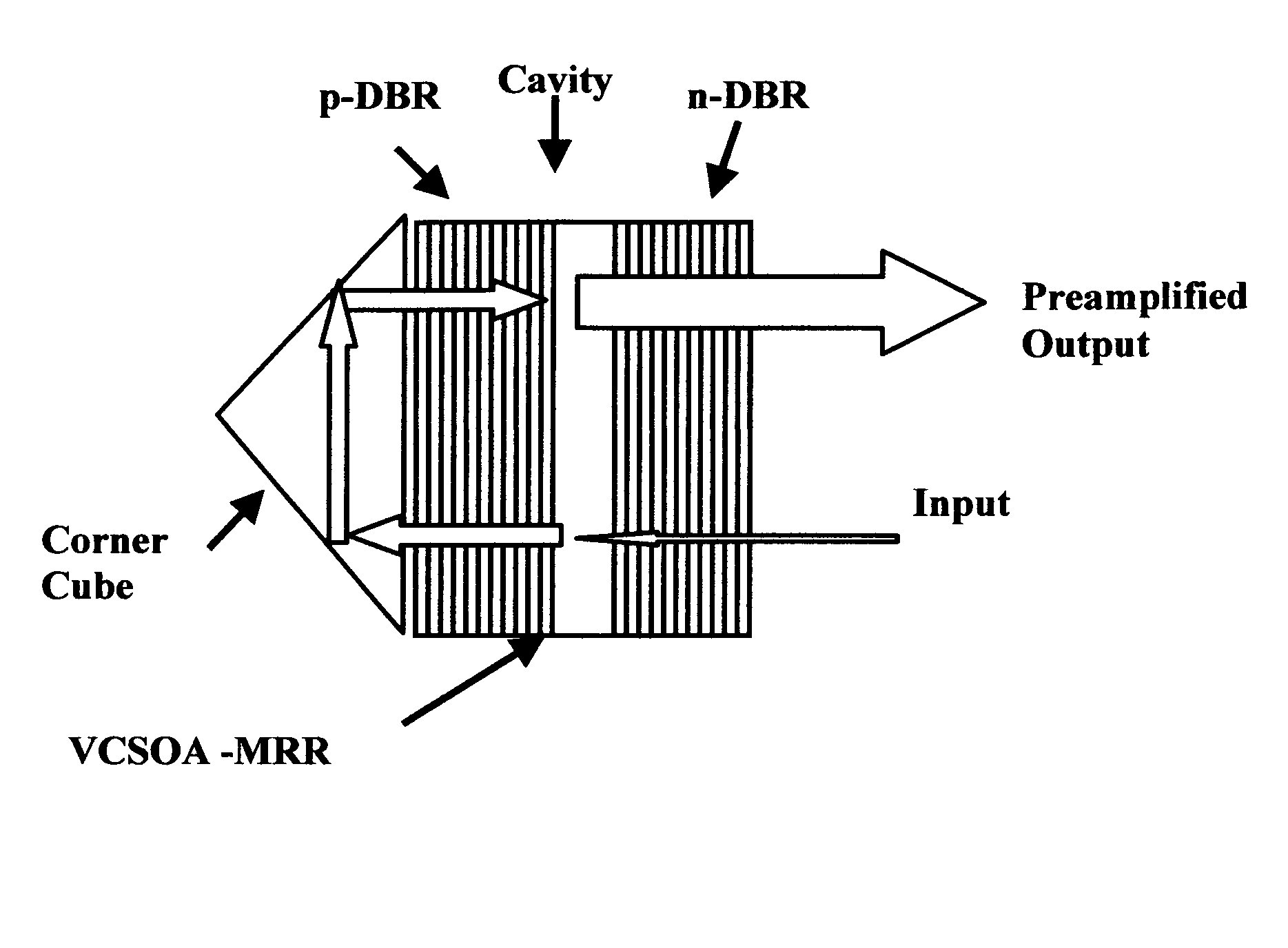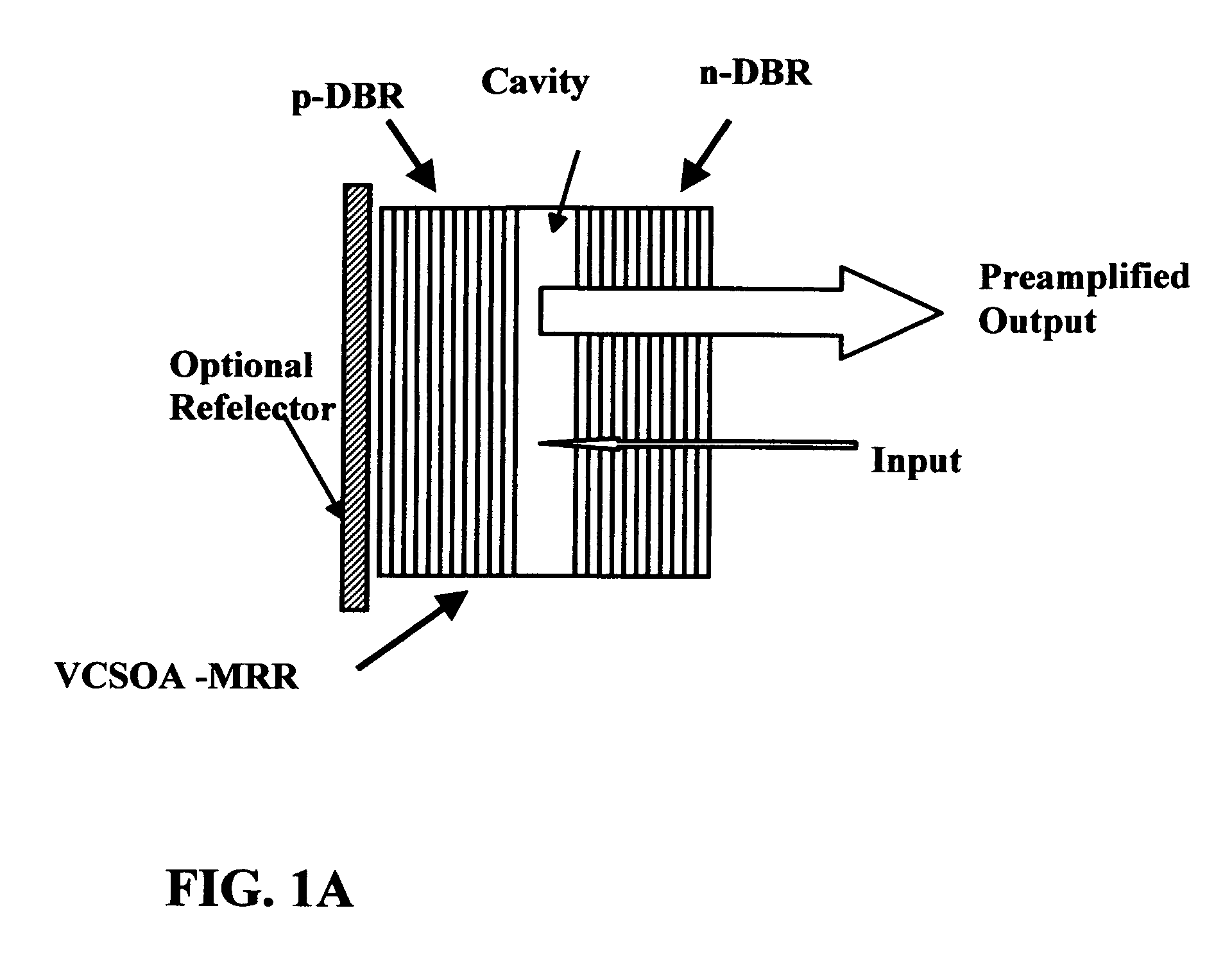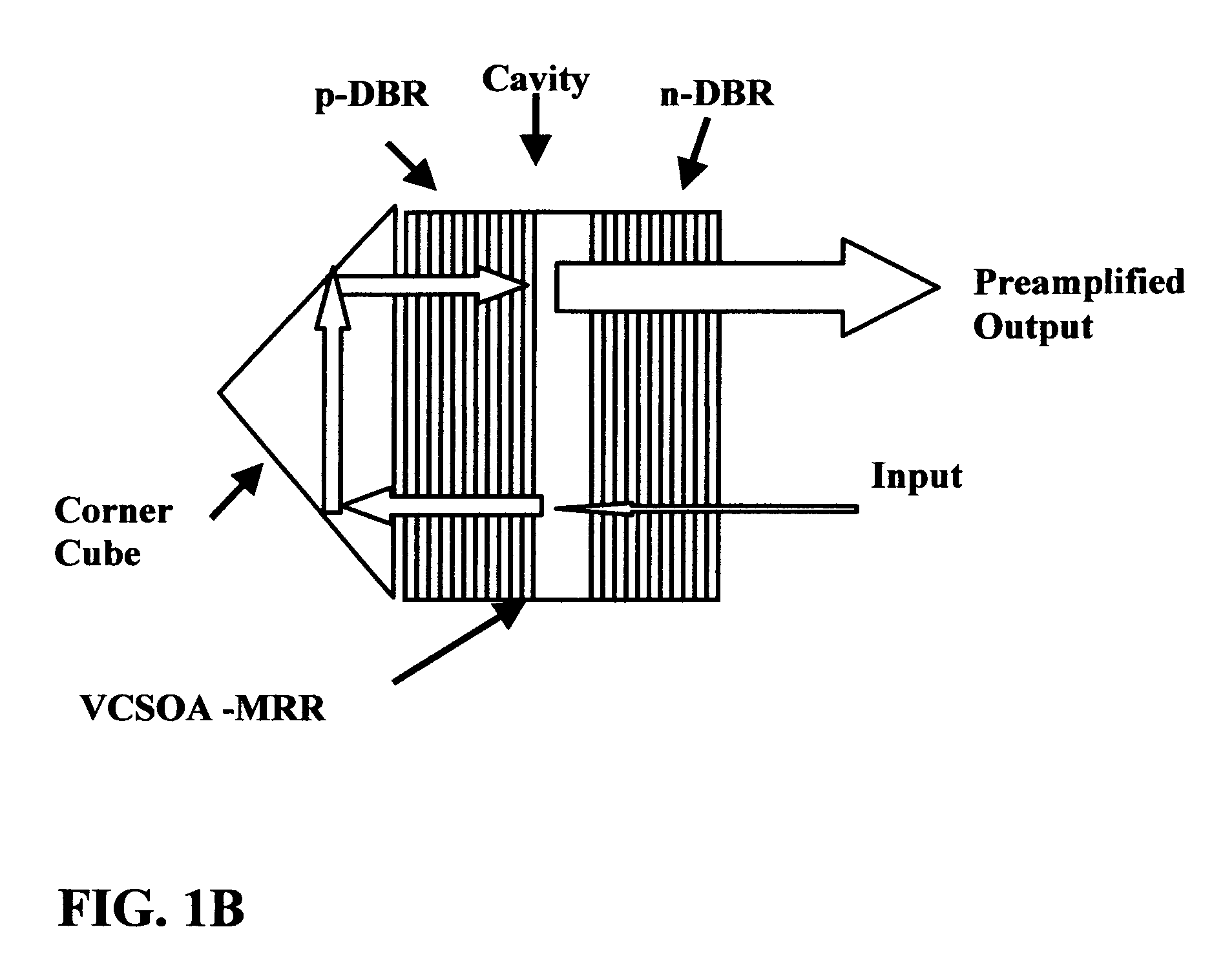Modulating retroreflector array using vertical cavity optical amplifiers
a technology of vertical cavity optical amplifier and retroreflector array, which is applied in the direction of semiconductor amplifier structure, instrumentation, laser details, etc., can solve the problems of low efficiency, high cost, and large capacitance, and achieves higher extinction ratio, higher speed, and favorable trade-off between range and speed and mrr area
- Summary
- Abstract
- Description
- Claims
- Application Information
AI Technical Summary
Benefits of technology
Problems solved by technology
Method used
Image
Examples
Embodiment Construction
[0022]FIG. 1 shows the basic VCSOA MRR concept of the present invention. The approach builds on technologies described in the copending U.S. patent application Ser. No. 10 / 621,203. The basic pixel of the proposed active MRR is a VCSOA which is operated in the reflective mode. The same VCSOA when operated in the transmissive mode is used to produce the optical amplification. For MRR applications, the VCSOA is designed differently to have optimized reflective gain rather than the transmissive gain as with the VCSOA photoreceiver (U.S. patent application Ser. No. 10 / 621,203). For the latter, the number of bottom mirrors bounding the VCSOA boundary is minimized for maximum transmissive output, while for the active MRR, the number of top mirrors is minimized.
[0023]FIG. 2 shows a 128×128 active MRR array sample, based on VCSOA arrays which can be bump bonded onto readout circuits to produce an MRR with reflective gain. Each pixel will have 20-100 μm diameter with 10 μm spacing between pix...
PUM
 Login to View More
Login to View More Abstract
Description
Claims
Application Information
 Login to View More
Login to View More - R&D
- Intellectual Property
- Life Sciences
- Materials
- Tech Scout
- Unparalleled Data Quality
- Higher Quality Content
- 60% Fewer Hallucinations
Browse by: Latest US Patents, China's latest patents, Technical Efficacy Thesaurus, Application Domain, Technology Topic, Popular Technical Reports.
© 2025 PatSnap. All rights reserved.Legal|Privacy policy|Modern Slavery Act Transparency Statement|Sitemap|About US| Contact US: help@patsnap.com



